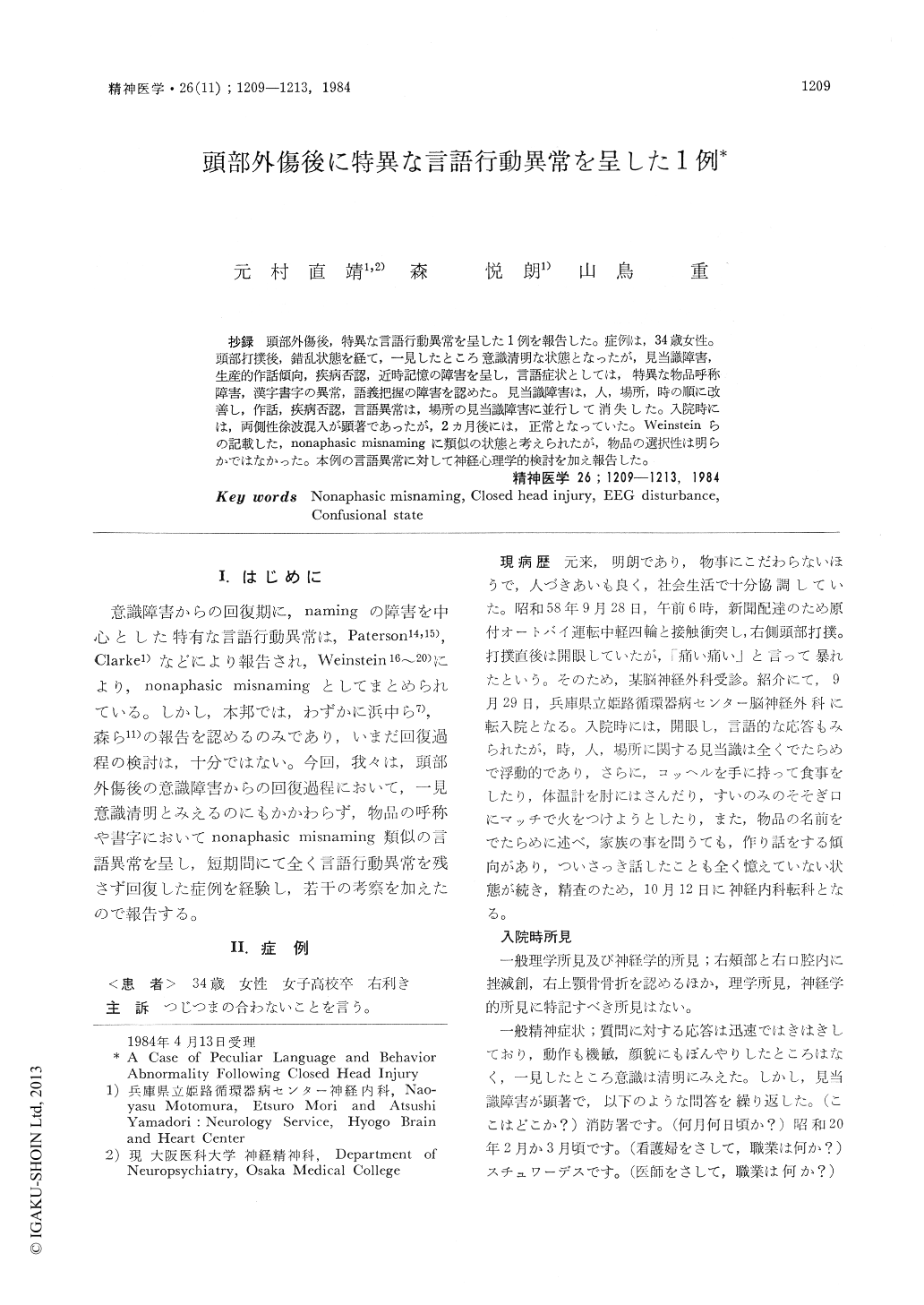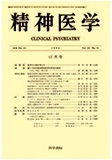Japanese
English
- 有料閲覧
- Abstract 文献概要
- 1ページ目 Look Inside
抄録 頭部外傷後,特異な言語行動異常を呈した1例を報告した。症例は,34歳女性。頭部打撲後,錯乱状態を経て,一見したところ意識清明な状態となったが,見当識障害,生産的作話傾向,疾病否認,近時記憶の障害を呈し,言語症状としては,特異な物品呼称障害,漢字書字の異常,語義把握の障害を認めた。見当識障害は,人,場所,時の順に改善し,作話,疾病否認,言語異常は,場所の見当識障害に並行して消失した。入院時には,両側性徐波混入が顕著であったが,2カ月後には,正常となっていた。Weinsteinらの記載した,nonaphasic misnamingに類似の状態と考えられたが,物品の選択性は明らかではなかった。本例の言語異常に対して神経心理学的検討を加え報告した。
A case of peculiar language and behavior abnormality following closed head injury was described. The patient, a 34-year-old woman, was transferred to Hyogo Brain and Heart Center 1 day after sustaining a head injury by traffic accident. On admission she was one of confusion with a slightly depressed level of consciousness. Both general physical and neurological examinations were otherwise normal. Two weeks after the onset she was referred to the Neurology Service for additional assessment of persisting behavioral abnormalities. She was alert but severely disoriented for time, person, and place. Digit span was 6 forward. Recent memory was markedly impaired. She bizarrely confabulated about her own situation and denied her trauma and illness. Her speech was fluent. Verbal comprehension and repetition were intact. However, confrontation namings showed peculiar disturbances. She called "a pilot" for a doctor, "a sanitary napkin" for a neck tie, and "a blackboard" for a mirror. She could not interprete easy proverbs and words which had abstract meanings and showed a distinct abnormality of "Kanji" writing as was seen in "Gogi aphasia." Reading aloud and "Kana" writing were intact. CT scan was within normal range but EEG showed bilateral slow activities. These language-behavior abnormalities were improved as disorientation to place disappeared. Neuropsychological consideration was attempted in the present case.

Copyright © 1984, Igaku-Shoin Ltd. All rights reserved.


